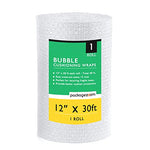You have no items in your shopping cart.
In recent years, the demand for sustainable and eco-friendly materials has been on the rise. With growing concerns about the environmental impact of conventional materials, researchers and manufacturers have been exploring new options that are both durable and environmentally friendly. One such material that has gained attention is bisquine plastic. In this article, we will explore what bisquine plastic is, its benefits, and its potential applications in various industries.
What is Bisquine Plastic?
Bisquine plastic is a type of biodegradable plastic made from renewable resources, such as plant starch or vegetable oil. Unlike traditional plastics derived from fossil fuels, bisquine plastic offers a more sustainable alternative. It can be produced through a process that involves the extraction of cellulose from plants, which is then converted into a polymer that can be molded into various shapes and forms.
The Benefits of Bisquine Plastic
1. Environmental Friendliness
Bisquine plastic is considered environmentally friendly because it is biodegradable and does not contribute to the accumulation of plastic waste in landfills and oceans. When exposed to the right conditions, bisquine plastic can break down naturally into organic compounds, reducing its environmental impact.
2. Reduced Carbon Footprint
Compared to conventional plastics, the production of bisquine plastic generates lower greenhouse gas emissions. Since it is derived from renewable resources, the carbon footprint associated with its production is significantly reduced. This makes bisquine plastic a more sustainable choice for those seeking to minimize their environmental impact.
3. Versatility and Durability
Bisquine plastic offers a wide range of applications due to its versatility and durability. It can be used in various industries, including packaging, automotive, construction, and consumer goods. From food containers to automotive parts, bisquine plastic can provide the strength and reliability needed for different purposes.
4. Renewable Resource Utilization
By using plant-based materials, bisquine plastic helps reduce the dependence on fossil fuels. This promotes the utilization of renewable resources and contributes to a more sustainable and circular economy.
5. Potential for Innovation
The development of bisquine plastic opens up new possibilities for innovation. Researchers are continually exploring ways to improve its properties, such as strength, flexibility, and heat resistance. As advancements are made, bisquine plastic could become an even more viable alternative to traditional materials.
Applications of Bisquine Plastic
1. Packaging Industry
The packaging industry is one of the largest consumers of plastic materials. Bisquine plastic can be used to create sustainable packaging solutions, such as biodegradable bags, food containers, and bottles. These products can help reduce plastic waste and provide a more environmentally friendly option for consumers.
2. Automotive Industry
In the automotive industry, bisquine plastic can be used for various components, including interior parts, panels, and exterior trims. Its durability and lightweight properties make it an attractive choice for manufacturers looking to reduce the weight of vehicles and improve fuel efficiency.
3. Construction Industry
Bisquine plastic can also find applications in the construction industry. It can be used to create sustainable building materials, such as insulation boards, roofing tiles, and piping. These materials can contribute to energy efficiency and reduce the environmental impact of construction projects.
4. Consumer Goods
From household items to electronics, bisquine plastic can be incorporated into a wide range of consumer goods. Manufacturers can create biodegradable and eco-friendly products, offering consumers more sustainable choices.
5. Agricultural Sector
In the agricultural sector, bisquine plastic can be used for mulching films, plant pots, and agricultural packaging. It provides a biodegradable alternative to traditional plastics used in farming practices, reducing the environmental impact of agricultural activities.
FAQs about Bisquine Plastic
1. Is bisquine plastic truly biodegradable?
Yes, bisquine plastic is biodegradable. When exposed to the right conditions, such as moisture, heat, and microorganisms, bisquine plastic can break down naturally into organic compounds. However, it is important to dispose of bisquine plastic properly to ensure it reaches the appropriate composting facilities.
2. Can bisquine plastic be recycled?
Bisquine plastic can be recycled, but the infrastructure for its recycling is still limited compared to traditional plastics. It is crucial to check with local recycling facilities to determine if they accept bisquine plastic. However, the primary advantage of bisquine plastic lies in its biodegradability, which makes it a more sustainable choice in terms of end-of-life disposal.
3. Is bisquine plastic more expensive than traditional plastics?
At present, bisquine plastic tends to be slightly more expensive than traditional plastics due to factors such as production costs and limited availability. However, as technology advances and economies of scale are achieved, the cost of bisquine plastic is expected to become more competitive.
4. Can bisquine plastic match the properties of traditional plastics?
Bisquine plastic possesses many properties similar to traditional plastics, such as strength, durability, and moldability. However, some properties, like heat resistance, may still require further development. Researchers are continuously working to enhance the performance of bisquine plastic to make it comparable to or even surpass traditional plastics.
5. Where can I find products made from bisquine plastic?
While the availability of bisquine plastic products may vary depending on your location, an increasing number of companies are adopting this sustainable material. It is advisable to look for eco-friendly and biodegradable alternatives in stores and online retailers. Additionally, some brands explicitly market their use of bisquine plastic, making it easier to identify products made from this material.
Conclusion
Bisquine plastic represents an exciting development in the quest for sustainable materials. Its biodegradability, reduced carbon footprint, and potential for diverse applications make it an attractive alternative to traditional plastics. As awareness of the environmental impact of conventional materials grows, the demand for bisquine plastic is likely to increase. By embracing bisquine plastic, individuals, industries, and governments can contribute to a more sustainable future while still enjoying the benefits of durable and versatile materials.








